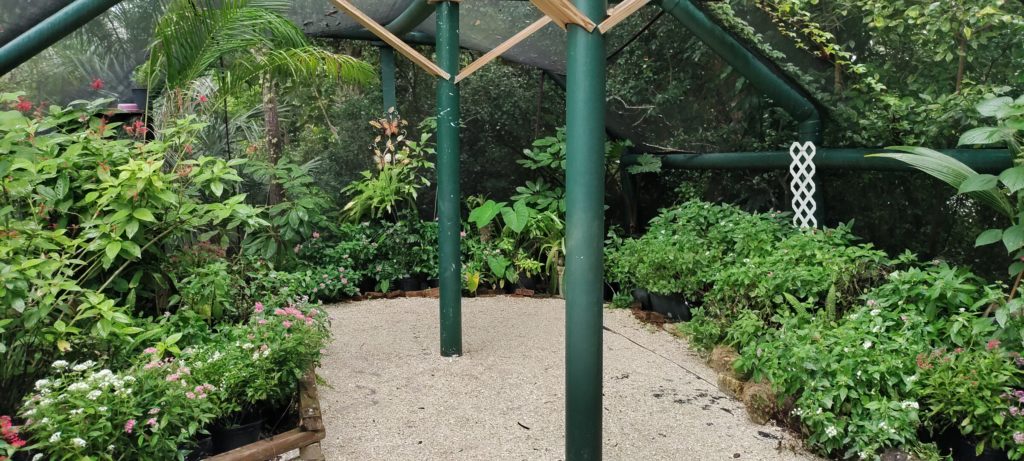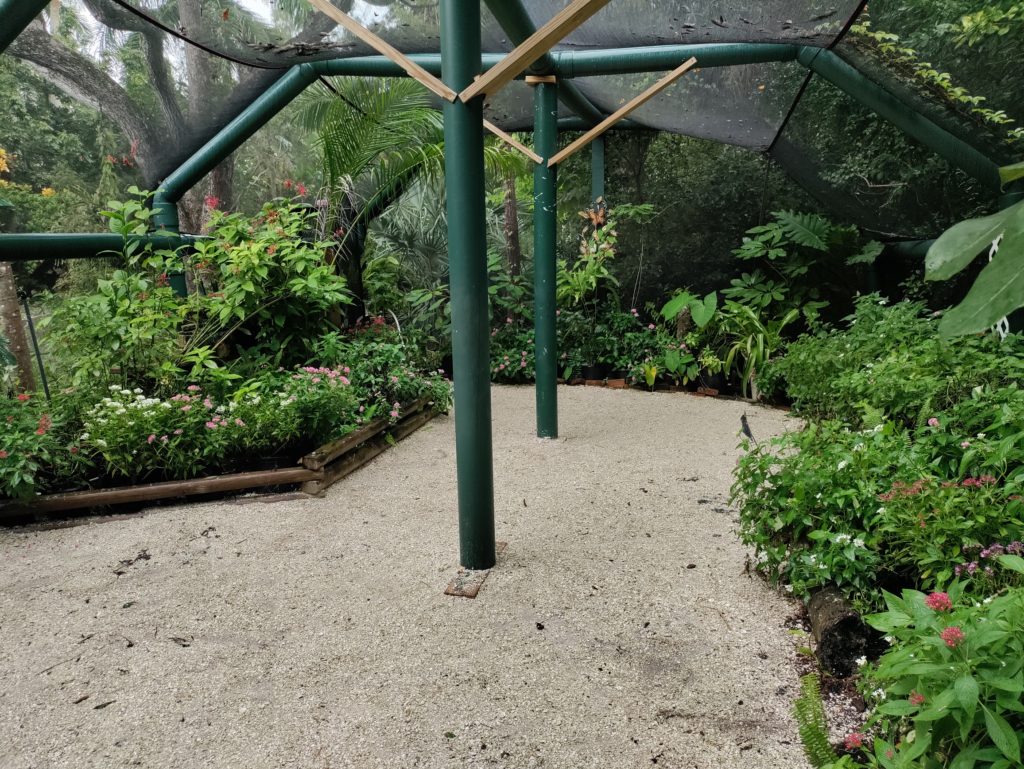Recently, Go Natural built this butterfly enclosure at Sarasota Jungle Gardens. If you watch this video with the sound turned on, you can even hear the waterfall that we made. You’ll also notice plenty of flowering plants, from which our butterflies gather nectar for their food source

The Forgotten Pollinators
Enclosures like this provide a safe and welcoming habitat for butterflies, the forgotten pollinators. Before European settlers introduced honeybees to North America, butterflies were even more important for pollination, a process that helps flowering plants to reproduce and fruits and vegetables to grow.
Today, bees and butterflies both face challenges because of environmental factors. When butterflies migrate, they need to arrive when the milkweed plant blossoms. With changing temperatures, however, there’s a risk that the butterflies will arrive at the wrong time and won’t find enough nectar.
.

Systemic pesticides, another problem for pollinators, are long-lived chemicals that are absorbed into the entire plant and even into the nectar itself. Previously, pesticides were applied to plant leaves and killed insects as they ate this plant material. With systemic pesticides, on the other hand, the chemicals don’t just remain on the leaves. Instead, they are absorbed into the plant and the result is that they disorient and diminish pollinators.
The Monarch’s Journey
Recently, the Monarch butterfly was added to the IUCN Red List of Endangered Species by the International Union for Conservation of Nature (IUCN). The Monarch are known to take remarkably long migrations each year and it’s the only animal or insect that gains rather than loses weight on its journey.
Butterfly enclosures won’t change the underlying threats to the Monarch or to other butterflies; however, these structures provide important benefits. Butterflies can find what they need to live and people can enjoy the tranquility. Someday, Go Natural hopes to build enclosures for children’s hospitals.

The Sarasota Jungle Gardens Project
With our Sarasota Jungle Gardens project, the enclosure that we built was several years in the making. After a successful trial with a portable and temporary enclosure, we were asked to custom-build a larger structure and maintain the plants inside it.
Although the original structure was white, Sarasota Jungle Gardens asked us to build one that was green in color instead. This required painting both the PVC pipe and the four-way couplers that we used for the project. We’ve refined our designs over time, and the entire enclosure handles stress well. The enclosure includes doors, of course, and the flooring is a ground cover with white shell rock.
The Importance of Shade
To protect the butterflies from the Florida heat, the agricultural netting that we used is made from a 30% shade cloth. We’ve tried different kinds of material but using a cloth that provides more than 30% shade causes the plants to grow tall and spindly because they don’t get enough sunlight. Some people recommend a 50% to 70% shade cloth but Go Natural has arrived at 30% based on our own experience.
We hope you’ve enjoyed this article and will read more of our content. Also, if you’re on Facebook, please like our page.
